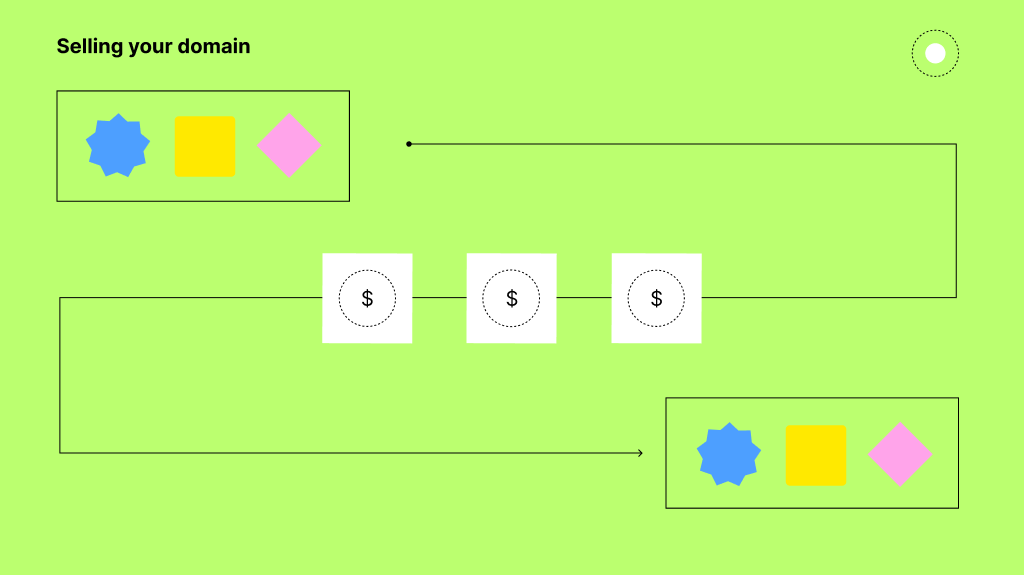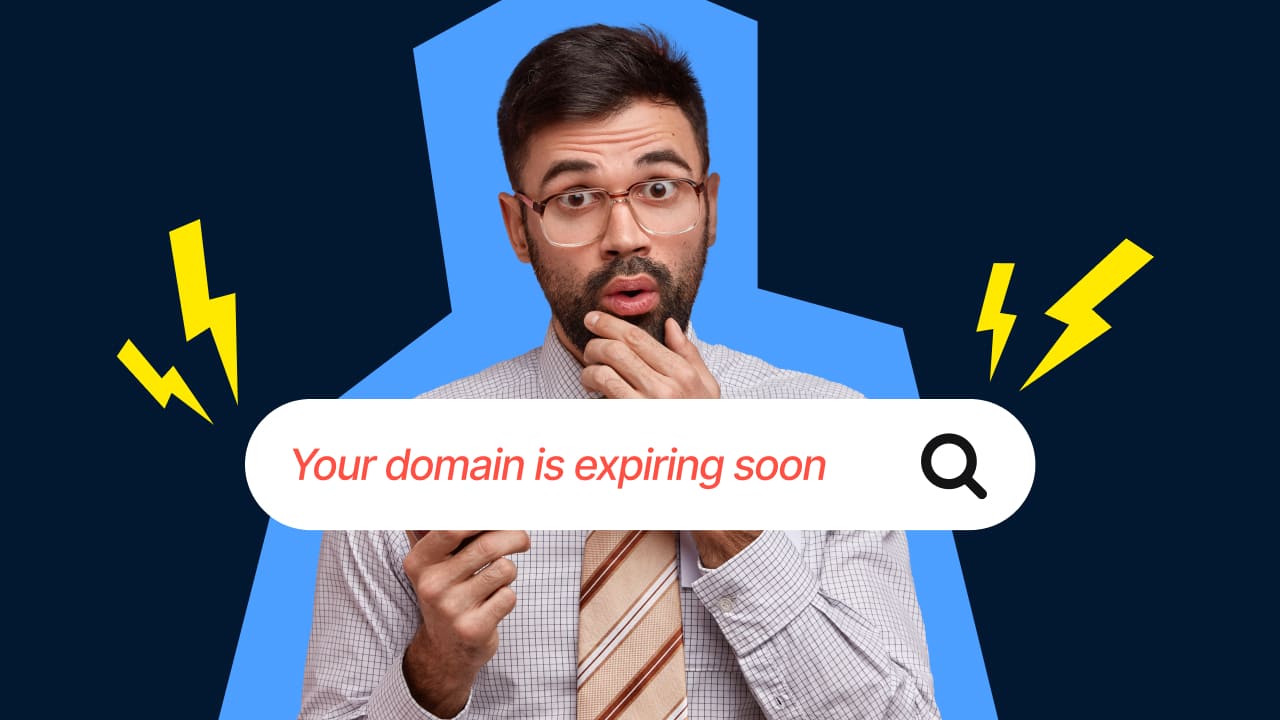Have you ever wondered if that dusty old domain in your collection could be worth a mint? You wouldn’t be the first – the domain market is booming. In fact, in the final quarter of 2024 alone, premium domains were selling for millions. It was reported that HubSpot co-founder and CTO Dharmesh Shah acquired Chat.com for $15.5 million, making it one of the top two all-time publicly reported domain sales in history. He then sold it on to OpenAI for an undisclosed amount.
But selling your domain isn’t just about slapping a price tag on it – it’s about strategy. Stick with us to find out exactly how to sell a domain name in Australia, step by step, so you can turn your virtual real estate into cold, hard cash.
Why should I sell a domain name?
Domains are desirable pieces of digital real estate. Below are a few reasons you might consider selling yours:
Domain flipping – Just like flipping houses, some people buy domains at a low price and sell them for a profit. If you want to know how to sell a domain name for a premium price, high-demand domains with desirable keywords or short, memorable names often attract buyers with deeper pockets. And if your domain is tied to a profitable website, its potential increases even more – with flipped websites typically selling for 20-30 times their monthly profit.
Unused domains – Got a collection of domains gathering dust? According to a 2019 study by a Singapore data company, about a third of .com domains were sitting unused. Selling them is a great way to declutter and cash in. Let’s face it, that “greatbusinessidea.com” hasn’t seen the light of day for the best part of a decade – why not turn it into a profit?
Is my domain name worth anything?
When it comes to domains, some are more desirable than others, and their value depends on a few key factors.
Length and simplicity – Shorter domain names tend to be more valuable because they’re easier to remember and type. A study conducted by Gaebler found that the average domain length for the top 1,000,000 websites is just eight characters. Think “shop.com” vs “onlineshoppingstoreforyou.com”.
Keywords – Domains featuring popular or trending keywords often fetch higher prices. For instance, domains with "AI" or "sustainability" could attract tech-savvy or eco-conscious buyers
Top-level domains (TLDs) – A ".com" domain is generally more valuable than a ".net" or ".info". In Australia, ".au" domains are highly sought after for local businesses.
Branding – Can a business build its identity around your domain? Names that are catchy, relevant, and easy to pronounce often sell for more.
Automated valuation tools – Use a tool like Estibot to get an automated estimate of the value of your domain. You can also research recent domain sales on platforms like Domain Name Journal to get a sense of market trends.
How automated valuation tools work |
Automated domain valuation tools provide a quick and easy way to estimate the potential value of a domain name. They do this by using algorithms that analyse things like:
It's important to remember that these automated valuations are estimates rather than definitive market prices and you should check multiple tools to give you the best idea of value. The true value of a domain can fluctuate based on other factors that are difficult for algorithms to capture, such as:
Ultimately, domain valuation is subjective and will be influenced by human perception. So, while automated tools offer a helpful starting point, they shouldn't be the only thing you base a domain's worth on. Having a chat with domain experts or brokers can give you a more comprehensive valuation, taking into account human factors that algorithms may miss. |
How do I prepare my domain for sale?
Just like staging a house before selling, your domain needs to be sale-ready:
Ensure it’s clean – Check your domain’s history to ensure it hasn’t been associated with spammy or penalised websites. Look out for red flags like previous use for phishing, malware distribution, or excessive spam links, which could harm its value or SEO potential. Tools like Wayback Machine can help you investigate.
Trademark considerations |
Do your due diligence before selling a domain, especially if it includes potentially trademarked terms. If you’re unsure, conduct a trademark search and seek legal advice. If you find that your domain contains a trademark, you can reach out to the company or individual that owns that trademark to see if they want to buy it from you. This can be a proactive way to avoid any legal complications! Here’s how you can approach it: 1. Identify the trademark owner:
2. Be professional:
3. Contact the trademark owner:
Some important notes: · Be prepared to negotiate: The trademark owner may counter your offer or have questions. Be open to negotiation and willing to provide additional information about the domain. · Consult with a solicitor: If you're unsure about the legal implications or need assistance with negotiations, consult with a solicitor specialising in intellectual property. · Document everything: Keep records of all communications, including emails, letters, and phone calls. By taking a proactive and respectful approach, you can increase your chances of successfully selling the domain to the trademark owner. |
Update contact information – Make sure your contact details in the WHOIS database are accurate and up to date so potential buyers can reach you.
Highlight traffic stats – If your domain has an active website, showcasing traffic data and SEO metrics can make it more attractive to buyers. Use tools like Ahrefs, Google Analytics, or Semrush to gather data on your site links, backlinks, and keyword rankings.
Where can I sell a domain name?
Knowing where to sell your domain name is half the battle. Here are some popular options:
Marketplaces – Platforms like Flippa are great for listing domains. Here in Australia, options like Netfleet cater specifically to local buyers. Just remember to factor in listing and sale fees, as well as those all-important escrow services (more on this later) to protect all parties.
Auction sites – If your domain is in high demand, domain auctions can drive up the price. Platforms like Sedo allow potential buyers to bid competitively.
Private sales – Got a specific buyer in mind? Reach out to them directly to save on platform fees and simplify the negotiation process.
What’s the best approach to selling my domain name?
Selling your domain takes more than just a listing – effective marketing is what really seals the deal. Here’s what you need to know:
1. Craft the perfect listing
Write a clear, concise description highlighting your domain’s potential.
Emphasise benefits like branding, SEO value, or niche relevance.
Set a competitive price based on valuation tools or professional appraisals.
2. Promote your listing
Share your listing on social media – especially in groups or forums focused on domains or the industry that your domain is related to.
Reach out to businesses or individuals who could benefit from owning your domain.
For high-value domains, consider paid ads to reach a wider audience.
How can I negotiate the best deal for my domain?
Negotiation is a key part of the process. Let’s make sure you secure the best price:
Start strong – Set a reasonable asking price, but leave plenty of room for haggling. To give yourself a general idea, we recommend researching comparable sales and market trends.
Know your worth – Don’t let lowball offers deter you. Use valuation data to justify your price and avoid settling for less than you deserve.
Secure transactions – Always use escrow services like Escrow.com to protect both you and the buyer during payment and transfer. You should also be aware of legal considerations – like transferring the domain’s ownership rights and complying with relevant tax regulations, depending on your location.
Remember, you’re selling digital gold – not handing over an old bike on Gumtree. Stay firm, but flexible.
What’s the process for transferring a domain to its new owner?
Once you’ve reached an agreement, follow these steps to transfer your domain:
Confirm payment – Ensure you’ve received the agreed amount before proceeding with the transfer.
Unlock the domain – Disable transfer lock and share the authorisation code with the buyer.
Update WHOIS details – Register the new owner’s information in the database.
Use escrow services – Platforms like Escrow.com ensure a secure transaction for everyone involved.
Common pitfalls to avoid when selling your domain
Selling a domain can be lucrative, but it isn’t without its challenges. Look out for:
Scammers – Be wary of fake buyers and fraudulent payment methods. Always use trusted platforms and escrow services.
Undervaluing your domain – Don’t sell your domain without researching its true market value.
Technical hiccups – Neglecting steps like unlocking your domain or updating WHOIS details can delay the transfer. To unlock your domain, simply log into your domain registrar’s account, navigate to the domain settings, and disable the domain lock.
Your domain sale questions answered |
How do I sell a domain name in Australia?
Can I sell a domain name with an active website?
What’s the fastest way to sell a domain name?
|
Ready to give your domain name a new lease of life?
Selling a domain name doesn’t have to be daunting. With the right preparation, you can transform your unused digital assets into a lucrative opportunity. Whether you’re selling one domain or becoming a serial flipper, every pro has to start somewhere.

.webp)


-min.png)